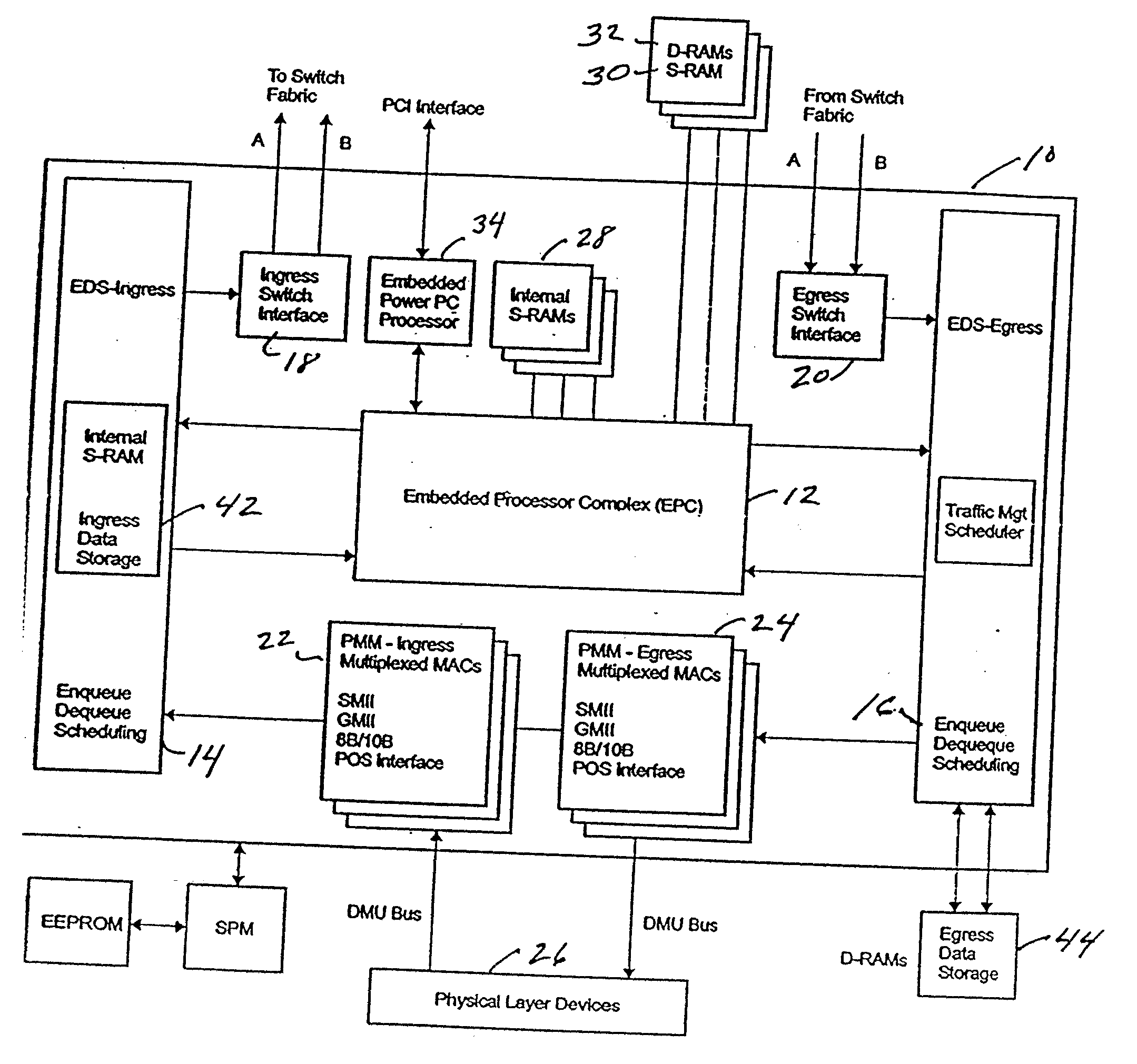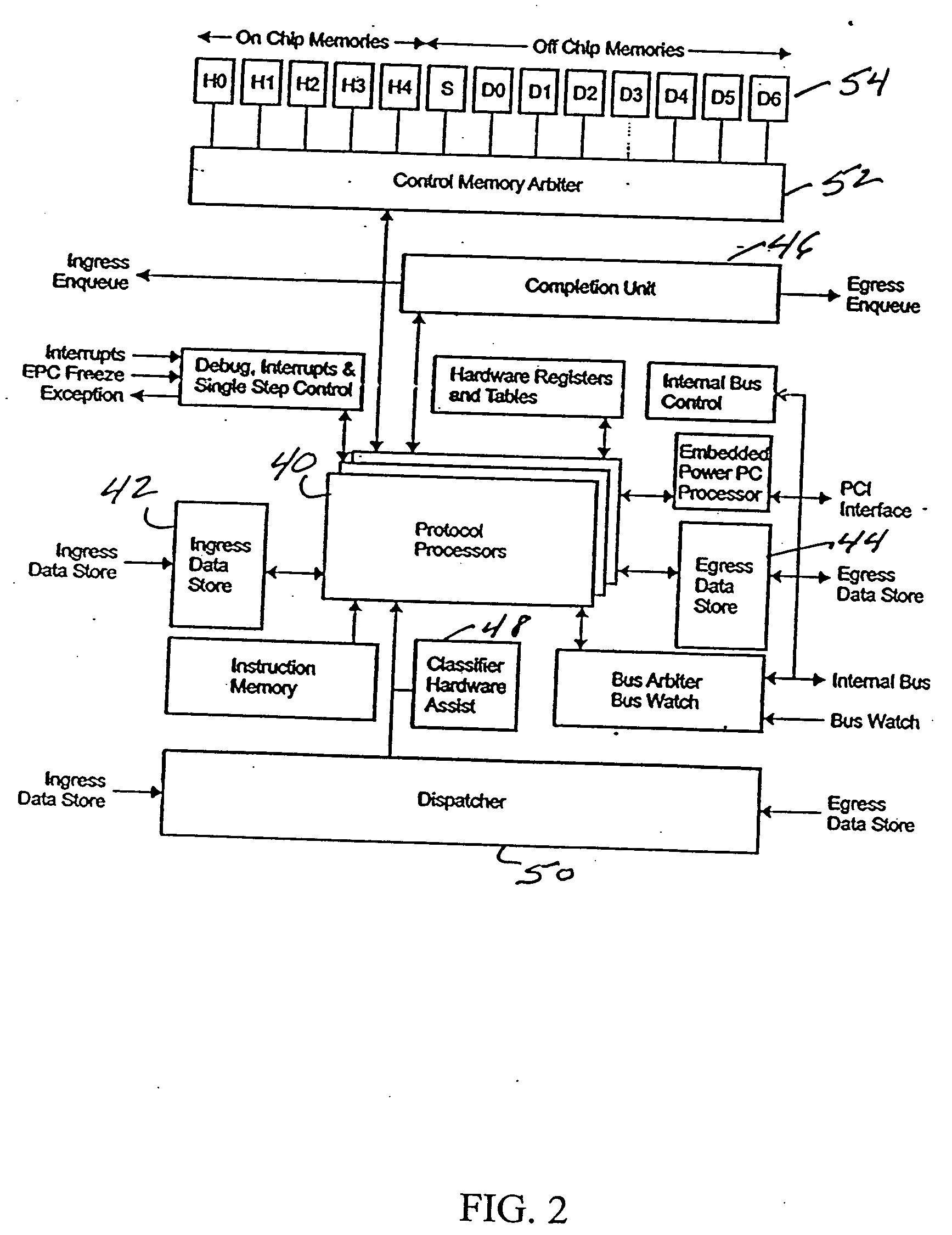Full match (FM) search algorithm implementation for a network processor
a network processor and search algorithm technology, applied in the field of full match search algorithm, can solve the problems of reducing the efficiency obtained from using hashing search, wasting a large amount of memory space, and reducing the search efficiency, so as to increase the search performance in trees and increase the performance
- Summary
- Abstract
- Description
- Claims
- Application Information
AI Technical Summary
Benefits of technology
Problems solved by technology
Method used
Image
Examples
Embodiment Construction
[0038] The present invention will be described in the context of a network processor in which the invention is embedded. The network processor 10 is a programmable switching and routing system on a single chip, an architecture of which is depicted in FIG. 1. It provides media interfaces for 10 / 100 Ethernet, Gigabit Ethernet and Packet Over SONET (POS) as well as data aligned serial links (DASL) for attachment to switch interfaces. Internal hardware accelerators increase performance and efficiency. An embedded processor complex (EPC) 12 includes protocol processors and an internal control point processor for frame processing, configuration and management support.
[0039] Up to N parallel protocol processors are available. In an embodiment of 16 protocol processors, 16,384 words of internal picocode instructions store and 32,768 words of external picocode instructions store are available to provide 2,128 million instructions per second (MIPS) of aggregate processing capability. In addi...
PUM
 Login to View More
Login to View More Abstract
Description
Claims
Application Information
 Login to View More
Login to View More - R&D
- Intellectual Property
- Life Sciences
- Materials
- Tech Scout
- Unparalleled Data Quality
- Higher Quality Content
- 60% Fewer Hallucinations
Browse by: Latest US Patents, China's latest patents, Technical Efficacy Thesaurus, Application Domain, Technology Topic, Popular Technical Reports.
© 2025 PatSnap. All rights reserved.Legal|Privacy policy|Modern Slavery Act Transparency Statement|Sitemap|About US| Contact US: help@patsnap.com



